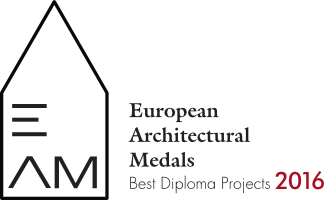This is a blog about an ongoing project focusing on a model of developement for Havana Vieja, Cuba.
author: Iwo Borkowicz (iwo.borkowicz@gmail.com)
—————

The Fundació Mies van der Rohe has announced this project as a winner of the Young Talent Architecture Award (YTAA) 2015-2016. An award for the best Graduation Projects in architecture, urban planning and landscape architecture in Europe. Established to “support the talent of recently graduated Architects, Urban Planners and Landscape Architects who will be responsible for transforming our environment in the future.”.
www.archdaily.com/YTAA
——————-

Project was awarded with a EAAE Prize for Intensity and Courage in Problem Solving by
University of Architecture and Urbanism Ion Mincu, European Association for Architectural Education, The Architects’ Council of Europe
www.eam.uauim.ro
——————-

This project was developed at KU Leuven, International Master of Architecture, Belgium
_ www.arch.kuleuven.be & internationalmasterofarchitecture.be
Master Dissertation within Streetscape Territories research framework _ www.streetscapeterritories.org
Streetscape Territories on site development project was co-financed by VLIR-UOS
_ www.vliruos.be
Panel 1
It is common known that Cuba’s inhabitants struggle with huge daily-life challenges. One of the biggest problems is the housing-shortage, with up to 30% of the society awaiting housing (Rodriguez, 2014). They are not literally homeless as the communistic regime grants everybody housing by accommodating them mostly into existing, often extremely overcrowded houses with even four generation-families living in two-room apartments (Bill, 2011; Ravsberg, 2013). Havana, and especially its Old Town (Havana Vieja), struggles with extremely high levels of deterioration of its urban fabric and houses. In 1990, two collapses of buildings were recorded by UNESCO every three days (PDHL, 2000).
The housing market is in clear crisis on both an economic as a social level. On the other hand, a very dynamically growing part of Cuba’s economy is tourism (Peters, 2002). To decrease the pressure of hotel demand on the national governed sector and implementing a subtle change in dealing with entrepreneurship to regenerate the city, Cubans are now allowed to rent rooms to tourists. Since 2010, the government introduced an updated bill, allowing individuals to move from a national-employment to self-employed sector choosing from a list of 181 permitted professions.
This project explores the development of an alternative growth model for urban and social resilience to regenerate the city-center of Havana. It is based on a research-stay, interacting with local actors next to data-mining. This project is the result of a search for development-patterns combining solutions addressing the housing shortage through integration of small scale tourism entrepreneurship within it and proposing architectural prototypes to implement the model. The proposal seeks to deal with the urban, economic and social aspects of the productive and regenerative city, empowering the local community, to obtain the necessary tools to face the challenging future of Havana and themselves as inhabitants.
Panel 3
This is a contact page with some basic contact information and a contact form.


